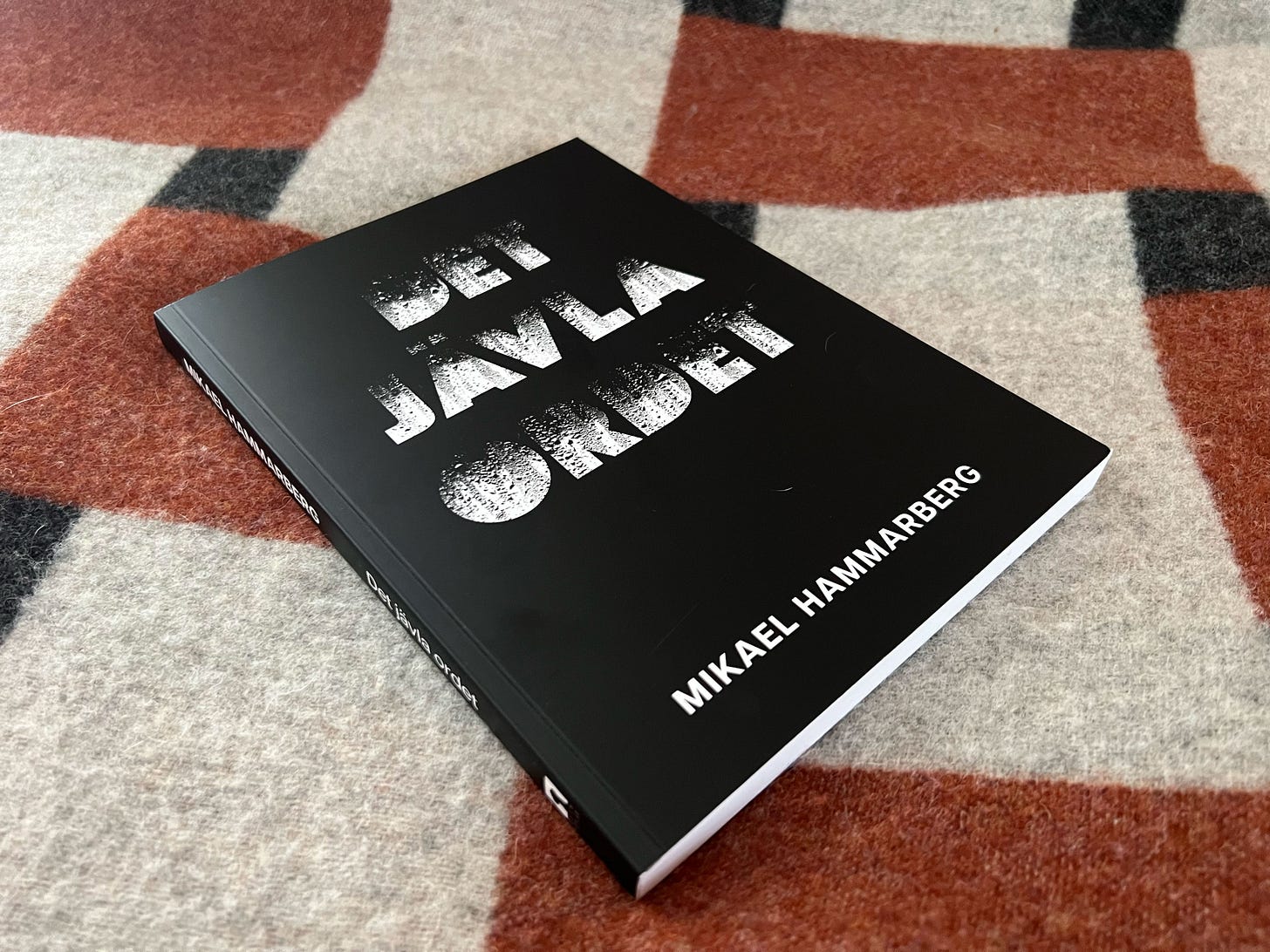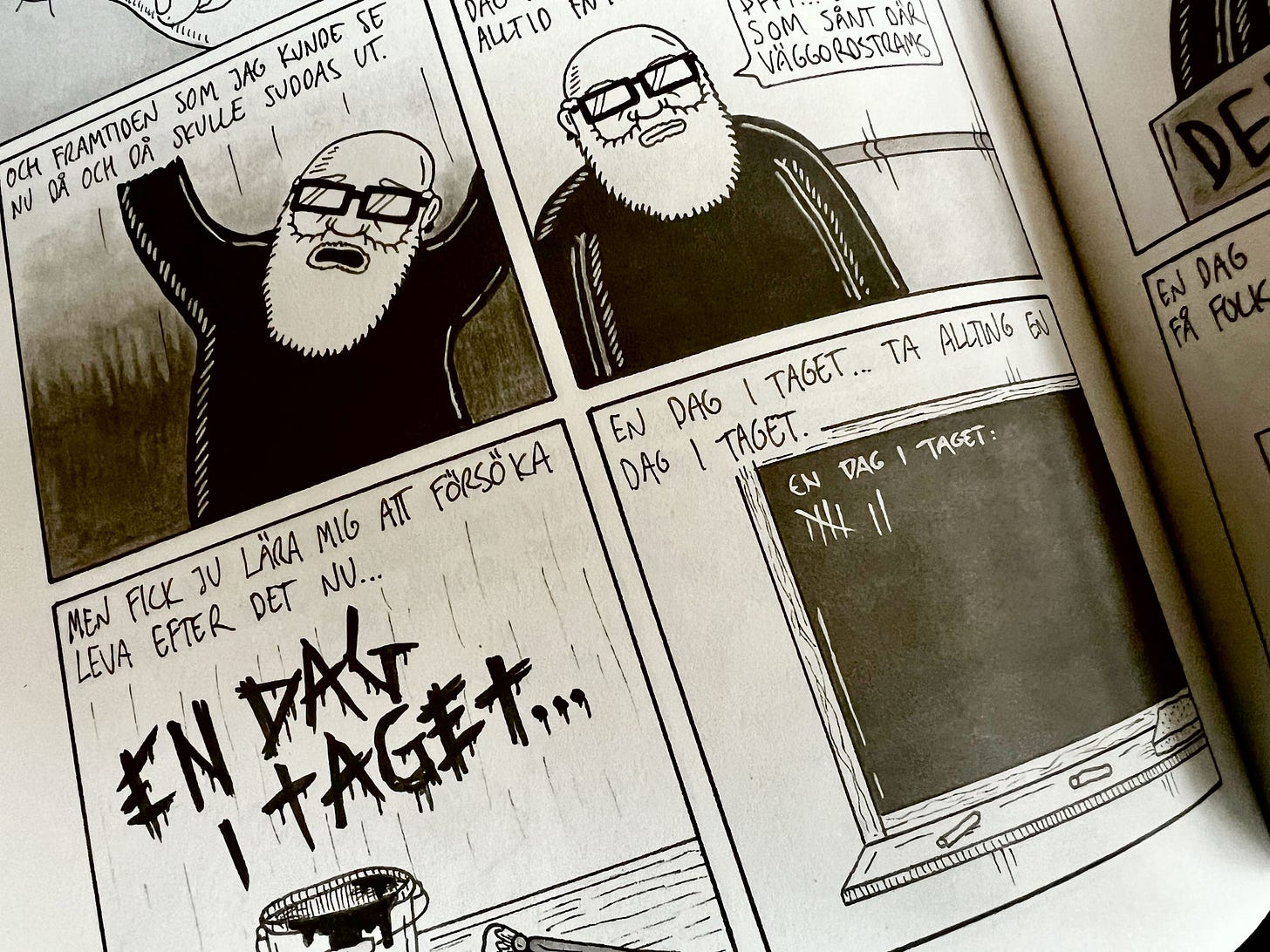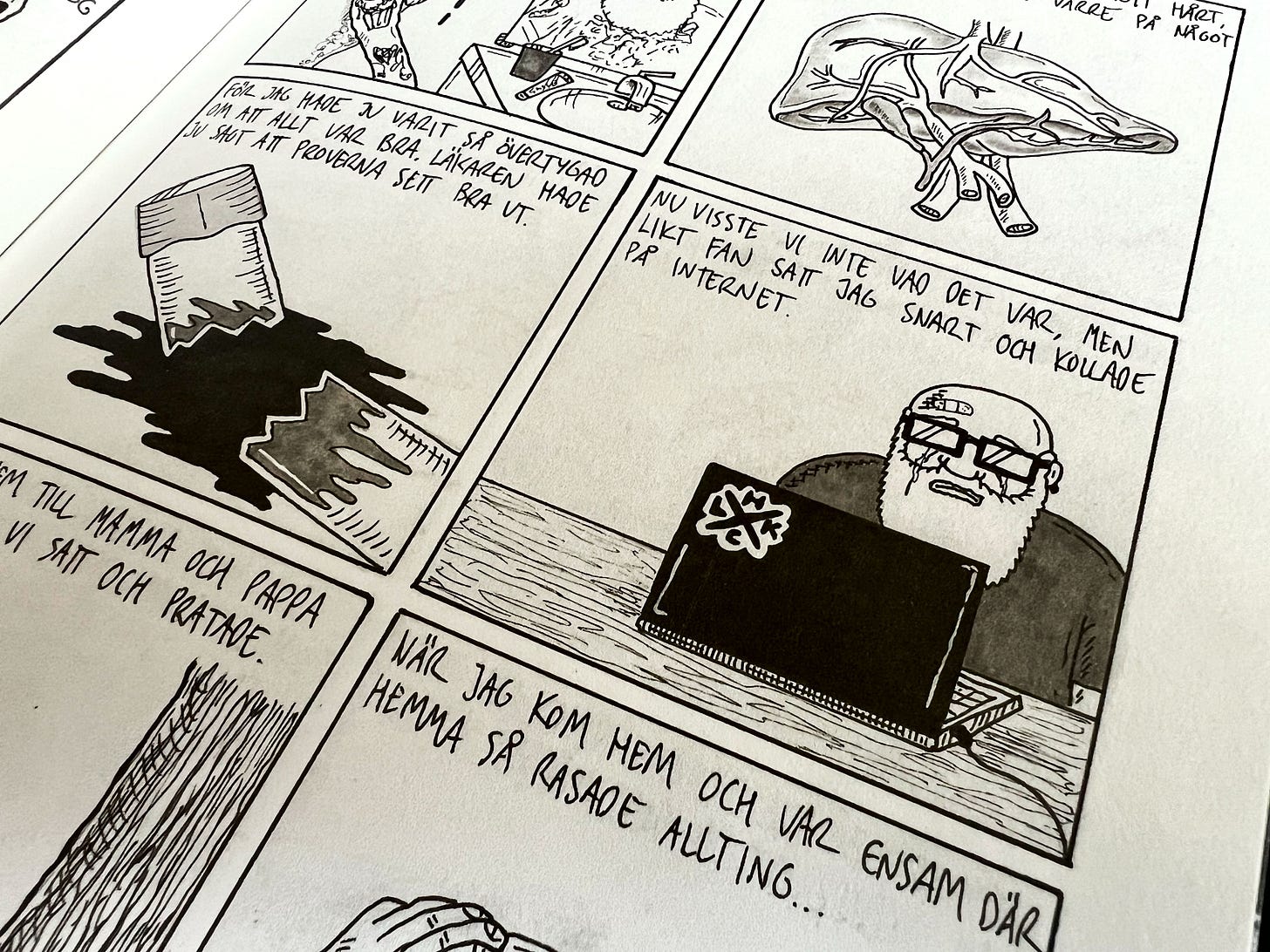We’re proud to have helped our lifelong friend Mikael Hammarberg bring his first book to life. Mikael has been a creative for as long as we can remember. His new book, Det Jävla Ordet, is his most personal work yet—an unfiltered, raw exploration of grief, anxiety, and self-reflection.
We had the opportunity to ask Mikael about his journey as a comics illustrator, the inspiration behind Det Jävla Ordet, and his creative process.
Can you tell us about your journey as a comics illustrator? How did you get started in this field, and what drew you to it? What have been some of the highlights and challenges of your years as a comics illustrator?
As most kids, I read comics when I was young, back when there was a wide selection of comics at the store. I have also been drawing and painting all my life, so it was destined these two worlds would collide eventually. My first experience with the idea that it was possible to do your own comic was when I read the zine Megaton in the late ’80s. One of the people behind it, Thomas Fels, was and is a huge inspiration.
The first comic I did that anyone except myself saw, I did in 2016. It was always interesting to me to tell a story with both words and pictures, but it took me a long time to gather the courage to try it more seriously. The challenge is always just that… to gather the courage to finish the story and show it to people. I’m not the person with the biggest self-esteem or belief in his own work, so that’s always challenging. The biggest reward for me has been that I gathered the courage to try, and I have met some truly amazing people through it. People I truly admire are now my friends.
Your new comic book, Det Jävla Ordet, explores deeply personal themes. What inspired you to create this story, and how did you approach tackling such emotional subject matter?
The first ever comic zine I did was called Det Jävla Ordet, and the book is a deeper journey into that story and things that have happened since I did the original one in 2016. It’s autobiographical, so the story was clear from the start. I had to do something to not break down completely, so I did a comic-zine—to have some sort of outlet for everything that happened, to hopefully process feelings, and to try to see it from an outside perspective.
I find inspiration all over the place. It can be music, movies, books, comics, games, or even overhearing something said on the bus going downtown
The book goes even deeper into the depression I struggle with, my worries, and the people around me. It was and is hard to write about such things, but I feel I have to. It’s taken way longer than I expected to finish it because I had to take breaks from the book after completing some parts or when it got too dark in my mind.
In Det Jävla Ordet, the protagonist, Mikael, grapples with his mother’s sudden illness. How much of this story is drawn from your own experiences, and how did you navigate balancing personal elements with fiction?
It’s autobiographical, so it’s all “true,” even though we all know memories can play tricks on you sometimes. I have, in other comics, mixed up fact and fiction a little more, but most of my work so far has been rooted in my own life or things around me. The balance for me is how much to include.
Dealing with themes of illness, anxiety, and self-reflection can be emotionally taxing. How did you take care of your own mental well-being while working on this project?
It’s been very hard, and I have taken breaks from time to time. It’s also hard really focusing on things like I write about in the book because you really have to look at it, analyze it, and how you felt—and also maybe how people around you felt or were affected by it.
But it has also helped me to be more open and talk about how I feel and that I have these problems. Don’t underestimate people’s ability to listen and care… and never underestimate just putting a record on and crying your eyes out.
As an illustrator, where do you typically find inspiration for your work? Are there certain artists, writers, or experiences that have particularly influenced your style and storytelling?
I find inspiration all over the place. It can be music, movies, books, comics, games, or even overhearing something said on the bus going downtown—yeah, basically anything can become an idea.
I get really inspired by people who won’t compromise with their work, like DEVO, Francis Bacon, and Charles Bukowski. Some comic book artists I really admire and that inspire my work are Mats Jonsson, Joe Matt (R.I.P.), David Liljemark, Åsa Schagerström, Johannes Torstensson, Henrik Bromander, and Stina Hjelm, among a few.
Can you walk us through your creative process when developing a new comic book? How do you go from initial concept to finished product?
Det Jävla Ordet was my first long project, and I have gotten some valuable lessons for future projects while doing it.
But the process from start to finish is basically always the same:
• I get an idea and try to think roughly how short or long it needs to be—if it even works or is interesting enough to do.
• Then I usually do some of the writing, if not all, depending on the length of the comic.
• After that, I do some really rough sketches, and when I get a feeling of how the image should be, I draw it up and then do all the ink-work, filling in blacks and greys.
I work with pens and paper.
What do you hope readers take away from Det Jävla Ordet and your other works? Are there specific messages or themes that you aim to convey through your storytelling?
I’ve said before—I hope at least someone feels something reading my comics or my writing. Whether it’s laughing at my silly adventures or crying over the sad parts, whatever the feeling may be.
Det Jävla Ordet was hard to do and very personal, so I hope people can see that—and that they understand that it’s okay to feel bad, be depressed, sad, angry, or whatever emotion you may have. There’s no shame in it.
Looking ahead, what are your goals as a comics illustrator? Are there any new projects or collaborations on the horizon that you’re particularly excited about?
My goal has always been to keep doing different projects and try new styles of expressing myself.
Right now, I’m halfway through my part for the upcoming issue of Pelarhelgon, a comic zine I do with Johannes Torstensson, Robin Larsson, and Eddie Karlsson. They are great people, great illustrators, and great storytellers, so I’m really looking forward to that.
Hopefully, I’m also doing a short movie based on one of my comics. Other than that, I just hope the ideas keep coming.
Finally, what advice would you give to aspiring comics illustrators who may be looking to pursue a similar career path? What lessons have you learned along the way that you wish you knew when you were starting out?
Find your own voice and your own style, and just go with it. I think every person has a story to tell in one way or another.
The one thing I wish I had known when I started doing comics is how long it takes—and that what took you hours, days, weeks, or years to make will be read in a flash. And that’s okay.
Mikael Hammarberg’s Det Jävla Ordet is an uncompromising, deeply personal journey—raw, honest, and impossible to ignore.
📖 Get your copy now. Contact Mikael directly on Instagram.




